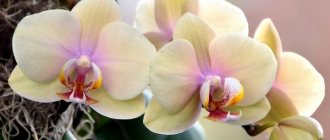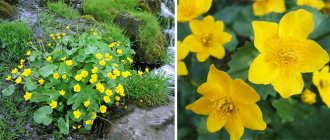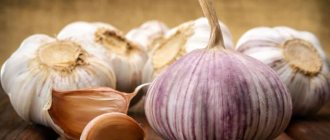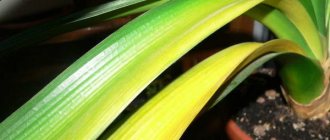Description of the plant
Astilbe is classified as a perennial. This is a herbaceous plant belonging to the genus Saxifragaceae. There are more than 200 varieties in total; there are both dwarf species and tall plants, up to 2 meters in height. This perennial grows in Asia, as well as in some regions of North America.
Astilbe is a very beautiful, ornamental plant that will bring oriental colors to your garden. The rhizome of the perennial is woody, has a dense structure, and only in some varieties is it loose.
Astilbe leaves are serrated, pinnate or simple. Openwork foliage is one of the advantages of this plant - astilbe can decorate the garden even when it is not blooming.
The flowers of this plant are apical inflorescences of purple, white, pink, and lilac flowers. There are varieties with red flowers. Astilbe looks very elegant during the flowering period. Different varieties of this perennial have different flowering times, so you can create interesting, colorful compositions in your garden if you plant different varieties. Your garden will sparkle with colors. The astilbe fruit is a capsule containing tiny seeds.
Buzulnik
Buzulnik, or Ligularia, is such a strange name for one of my favorite flowers. Ligula is translated from Latin as “tongue”. Thus, the name is derived from the shape of the flowers, or rather the petals. It was not possible to find out why it is called that in Russian.
I note that I very rarely see this flower in garden plots. I really want to say a good word about him. It looks very joyful, unusual both in inflorescences and leaves. I read that he comes from Asia. In total there are over 150 species of Ligularia. In Russia, several types are the most common. Among them are Przhevalsky’s jagged and buzulnik. Only the jagged one grows for me.
At my dacha he feels at home, comfortable. The fact is that it is a shade-loving plant and loves moisture very much.
This is exactly what I have in full in my garden.
At first I tried to grow it in the sun and in partial shade, because I did not know either its name or its characteristics. I immediately noticed that under these conditions its leaves began to droop. Only when he got under the apple tree, in the shade, did he show himself in all his glory.
It doesn’t let me down with its flowering either. Imagine, from the end of June to the end of September I enjoy its continuous flowering and the beauty of its huge, beautiful heart-shaped leaves. By the way, from the reverse side, when the wind blows and they sway, you can see that the leaves are an unusual bluish color.
grows more than 1 meter in height
I love watching its leaves bloom in the spring. First, a nice little pouch is formed, from which they then “hatch.”
Yellow-orange flowers are collected in inflorescences as if in bouquets. They look very impressive. In the evening, it seems that they are illuminated from the inside, so they stand out brightly against the dark background of the garden.
If your flower garden is in the shade and in moist soil, then the buzulnik can be combined with any flowers that are satisfied with the same conditions. Hostas and astilbe can be called his inseparable friends.
Features of care
- Ligularia is not fussy if planted in the right place, i.e. into the shade. True, it requires constant hydration.
- I propagate by dividing the root,
although they say it can also be done by seeds. There's simply no need for it. I divide it approximately once every 4 years, as it grows.
Advice:
It is best to do this in the spring so that it can recover over the summer. If you do this in the fall, you can damage the root system, and the plant will be sick for a long time.
- The winter of our central zone is not scary for the buzulnik, even the frostiest.
- It is practically not affected by pests. So, it is extremely rare in the spring to find slugs on it, and sometimes there is powdery mildew, where would we be without it.
- I feed it with 10% infusion of bird droppings. I buy it inexpensively in vacuum packages at the garden center in dry form.
Astilbe and the sun
Please note right away that this perennial, no matter how unpretentious it is, will not grow in the sun, or will grow too slowly. Astilbe is a plant only for shade or openwork partial shade of large trees and shrubs. Why does astilbe not grow at all in the sun and what should be done? It’s just that its delicate leaves, shoots and roots, located close to the surface of the earth, cannot stand the scorching summer sun at all.
Astilbe must be constantly moistened and if you decide to plant this perennial in a sunny flower bed, you will have to water it twice a day - morning and evening. This makes care very difficult and burdensome. Prolonged drought is destructive for this plant, and the sun dries out the soil very quickly. The best place to plant astilbe is in the shade. But that is not all. What needs to be done for proper and rapid growth of plants?
Astilbe loves water very much, and therefore the best place for planting is the shore of a reservoir or soil with groundwater lying close to the surface. High soil moisture is a prerequisite for good development and rapid growth of astilbe and its abundant flowering.
As for the choice of soil composition, this plant is extremely undemanding in terms of soil composition, but if we talk about preferences, heavy loams rich in moisture are more suitable for astilbe. The perennial will grow well on loose soils rich in organic matter, on peat soils with neutral acidity. Therefore, an important condition for good flower growth is the application of fertilizers during planting and during the growing process.
Astilbe does not tolerate poor soils very well, but responds well to fertilization, thanks to its lush and long-lasting flowering.
LiveInternetLiveInternet
Saturday, May 09, 2015 19:04 + to quote book https://greennirvana.ru/rasteniya/kustarniki/astilba-posadka-i-uhod.html#prettyPhoto Growing this wonderful plant is not difficult, following some planting and care features. You should start by choosing a place to plant. What needs to be done before planting Choose a place for planting In the wild, astilbe grows under the canopy of foliage near bodies of water, therefore, the best place to plant the plant is partial shade and moist soil. Astilbe does well in the shade of trees and shrubs, but the shading should not be strong. It should be noted that now varieties of astilbe have appeared that allow it to be planted in sunny areas, subject to abundant watering and careful mulching of the soil in order to preserve moisture. Flowering is abundant, but short-lived. Select planting time For planting astilbe, the end of March - the beginning of May or the beginning of autumn is suitable. When planting a plant in the fall, you need to calculate the time so that the plant has time to get stronger before the cold weather. The transfer of seedlings obtained from seeds to the ground occurs in early June. Prepare the soil Astilbe grows well in moist and light soil. A bed about a meter long needs to be dug up to a depth of no more than 30 cm, after which two handfuls of bone meal and approximately 30 grams of complex fertilizers should be added to the soil. Removing remnants of weed roots and adding peat, humus or compost to the soil is the final stage in preparing the bed for planting. Now that the soil is ready, you can proceed directly to planting the plant. The rules for planting astilbe vary depending on the material that is intended to be used for planting. Step-by-step instructions for planting astilbe seeds 1. To improve the germination of seeds, place them in a place with a temperature of -4° to +4°, and after twenty days, transfer them to a warm, bright room with a temperature above 18°. 2. Fill the planting containers with a mixture of peat and sand in a 3:1 ratio. 3. Given that astilbe seeds are tiny, they must be mixed with sand before planting in the soil. 4. Distribute the seeds evenly and carefully over the surface of the soil. 5. Using a spray bottle, water the seeds thoroughly. 6. Do not allow the soil to dry out for 3-4 weeks. 7. Seedlings should be picked after the first leaf appears: remove each seedling from the soil; pinch off the root one third of the length; 8. Plant the sprout in a separate container with thoroughly moistened soil. 9. At the beginning of June, plant seedlings in the ground. If you intend to plant a ready-made seedling obtained from an adult plant, the following method of planting astilbe will be useful to you. Planting a divided bush. It is advisable to mulch the soil around the bush after planting. This method is very popular among lovers of ornamental plants. For planting, a part of an adult astilbe bush with 1-3 buds and a root 3 to 5 cm long is used. Planting the plant in the spring will allow you to observe the lush flowering of the new bush in the fall of the same year. To plant a seedling, a bed one meter long is allocated, in which holes are formed with a depth and width of approximately 20-30 cm, at a distance of approximately 25-35 cm from each other. A mixture of 25-30 grams of mineral fertilizers and 1-2 handfuls of bone meal with ash is poured into each of them. All this is mixed and filled with water. The place for planting astilbe is ready. All that remains is to cover the planted bush with a layer of mulch consisting of pine needles, bark, leaves or sawdust. This method of transplanting astilbe allows you to plant it even during the flowering period, subject to abundant and regular watering for two to three weeks. Experienced gardeners use another method of planting. Planting cuttings with a “heel” In early spring, a renewal bud is cut out from the bush, which is a bud of an overwintered plant from which a shoot has begun to develop, along with a piece of root. This part of the rhizome is called the “heel”. Such cuttings are planted in greenhouses using a fertilizer mixture prepared in the same way as when planting in the ground. This substrate is poured onto the soil in a layer 5-7 cm high. To plant astilbe in a garden bed, you will have to wait a whole year, but flowering will begin within a few months after planting. Transplantation At the age of five years, astilbe needs replanting, which is carried out in spring or early autumn. Replanting can be done without digging up the plant completely: just separate part of it, fill the pruning area with ash and add fresh soil to the resulting hole, and transplant the resulting seedling to a new place. After such a division, astilbe will delight you with its flowering next year. Care In order for the planted plant to remain healthy for as long as possible and delight with its lush flowering, it is necessary to provide it with proper care. Caring for astilbe includes a number of actions that take into account the characteristic characteristics of the plant. Watering The roots of astilbe grow upward, releasing young roots, as a result of which it is very important to prevent loss of moisture in the top layer of soil. On hot days, it is necessary to water the plant twice a day: in the morning and evening hours, accompanied by watering by mulching the soil, which will prevent the soil from drying out. Insufficient soil moisture threatens the death of young plants and is the cause of withered, curled leaves and shredded inflorescences in adults. On the other hand, abundant watering in August-September helps to lengthen the inflorescences. Feeding To maintain lush and long-lasting flowering, it is necessary to fertilize astilbe twice a year. The first occurs when young shoots appear in early spring. Complex fertilizers with a high nitrogen content are suitable. The turn for the next feeding comes in the fall, after the astilbe has faded. This time, preference is given to phosphorus and potassium compositions, mainly in liquid form, to avoid burns on the stem. After fertilizing, the soil needs to be loosened and mulched. Pruning Pruning of astilbe, during which the above-ground part of the plant is cut off at soil level, is done in late autumn. After flowering, you can cut off all faded inflorescences, whose place will soon be taken by new leaves. Preparing for winter Astilbe will withstand the most severe frosts well, if you remember that the roots of the plant growing upward reach the soil. Mulching will help save bare roots from freezing. In late autumn, you should fill the gaps between the bushes with pine needles or sawdust and cover the bush with two layers of spruce branches or bark. Protection from pests and diseases. Penny is slobbering. Astilbe is quite resistant to diseases and pests. But it happens that she suffers from slobbering pennies and a couple of nematodes: strawberry and root-knot. Pennywort attacks the foliage, causing the leaves to turn yellow and curl, and the plant begins to wilt. Cicadas living in saliva-like formations suck out leaf tissue. In addition, they are known as carriers of phytoplasma and viral diseases. In the fight against them, karbofos, mospilan, aktara, rogor and confidor are used. Strawberry nematode also affects foliage, resulting in leaf deformation and brown and yellow spots on them. All this has a depressing effect on the plant, and its growth slows down. The root-knot nematode causes damage to the roots, living in the growths formed on them. Diseased astilbes grow and bloom poorly, and if seriously damaged, they die. You can stop the spread of pests by destroying the infected plant or using the drug Fitoverm. Photo of astilbe Video from an experienced gardener about planting astilbe. And about pruning astilbe. The many faces of astilbePlanting a garden https://www.sazhaemsad.ru/mnogolikaya-astilba.html Astilbe: cultivation. Astilbe calmly reacts to any type of soil; the only thing it needs is timely watering. However, if there is a choice, slightly acidic loose soil, seasoned with organic fertilizers, is preferable; It is best to use peat for mulching. Astilbe can be planted in partial shade and in open areas, but not all varieties grow well in a sunny place. The Chinese dwarf astilbe, as well as the varieties Diamant, Frieda Clapp, and Strausfeder, are more adapted to high temperatures than others. If there is strong shading, the plant may not bloom well. It is undesirable to place astilbe in close proximity to trees: their root system weakens it. Ideal for this plant are areas where the groundwater is high - there it receives enough moisture all summer. And yet, it is impossible not to clarify that in areas with a dry, hot climate, astilbe does worse - it blooms weaker and may look depressed, so growing astilbe in the southern regions is quite problematic. The fertilizing scheme depends on the degree of soil moisture. It is undesirable to apply mineral fertilizers on dry soil; In this case, the nutrition necessary for the plant is provided by adding compost and peat. If the soil is sufficiently moist, complex fertilizer is applied every spring (20 g of fertilizer and 10 g of urea are required per bucket of water), and after flowering, the astilbe is fed with phosphorus and potassium fertilizer and mulched with humus. Wilted astilbe inflorescences must be trimmed. Its stems are flexible and elastic, not afraid of gusty winds, and the weight of the inflorescences, wet after the rain, only forces the stems to bend elegantly without the risk of being broken. Old plants do not require shelter for the winter; It is better to cover the young ones lightly: in a snowless winter they may freeze. Astilbe has decent winter hardiness, and is practically not damaged by pests. Astilbe: planting, care and propagation In favorable conditions, with regular feeding, astilbe can grow for up to 10 - 15 years in one place. But at the same time, the decorative value of the plant is often reduced. Astilbe is characterized by rapid vertical growth of rhizomes, so adult bushes tend to “stick out” from the ground over time, at the same time young roots are too close to the surface of the earth, which is why they quickly dry out, and the plant begins to bloom worse - the inflorescences become smaller , and the number of peduncles is reduced. This is the reason for regular division and replanting of astilbe (every 3-5 years). To do this, the bush is divided into 4-6 parts with a sharp knife or shovel, each of them must have developed buds. Young cuttings are planted at a distance of 0.3-0.5 m from each other and provide good watering over the next few days. Astilbe can be planted and replanted at almost any time of the year (except winter, of course). When replanting, you should remove the lower parts of the rhizome and place the seedling in the planting hole so that the renewal buds are buried approximately 4–5 cm. Humus and complex fertilizer (25–30 g per plant) are applied under the bush, the soil surface after planting and watering mulch with peat. In the first year, all flower stalks should be removed so as not to weaken the plant; it will reach full development the next year after division. If for some reason you cannot replant astilbe so often, then you can get by by adding fertile soil to the base of the bushes and regular fertilizing (in the spring - with complex mineral fertilizer, and in the fall - with phosphorus-potassium fertilizer). If every autumn you generously mulch the soil around the bush with peat and rotted compost, you will have to rejuvenate the plantings less often. In addition to dividing the bush, astilbe propagates well by cuttings, renewal buds and seeds. Renewal buds form at the base of the shoot, on the rhizome. In order to separate them, you do not need to dig up the bush - just rake away the soil from it and use a sharp knife to separate the bud with part of the rhizome. This operation is performed in the spring, when the astilbe shoots reach 4–6 cm. More than a quarter of all renewal buds should not be separated at one time. The resulting planting material is placed on a prepared bed with a distance of 9 x 6 or 7 x 4 cm. The bed is located in the shade; After planting, you can cover it with film. By autumn, the seedlings take root, and in the spring they begin to grow. As with dividing the bush, the plants are not allowed to bloom in the first year. For the second year in June – July, regular (every 10 days) liquid feeding is recommended. They use mineral and organic fertilizers alternately. Astilbe can be cut from spring and summer. In the spring, young shoots up to 15 cm long are cut off; in the summer, shoots formed from daughter buds are used. The bed for cuttings is arranged in partial shade; its top layer (up to 4 cm) is made of sand. Planting material is watered regularly; In hot weather, spraying is used. The cuttings are kept under film until they take root. Plants can be planted in a permanent place after a year. When using this propagation method, keep in mind that 30 to 60 percent of cuttings survive. Seed propagation is used less frequently and mainly for species astilbes - varietal astilbes, as a rule, are propagated in this way only by breeders. Astilbe seeds have low germination and require stratification. They are sown before winter on the surface of the soil in shaded beds. In spring, small shoots appear, which should be picked after the appearance of the first true leaf. Seedlings require mandatory shelter for the winter; They are replanted every other year, in the spring. Astilbe grown from seeds blooms three years later. Astilbe in garden design. Astilbe inflorescences are large fluffy panicles formed on tall peduncles. The most common are varieties with white and yellowish inflorescences; There are also purple-pink, light pink, deep pink, red and purple. There are four types of inflorescences based on their shape: paniculate, pyramidal, drooping and rhombic. A flower garden or border consisting of only astilbes is very beautiful; here you can use a variety of varieties - shapes of inflorescences and a riot of colors. Astilbes also look good in mixed flower beds; they are especially suitable for shady places, where their constant companions are the many-faced hostas. In the shade, white-flowered varieties are especially spectacular, enlivening the garden twilight. In sunnier areas, it is good to combine astilbe with daylilies - its openwork leaves successfully set off the large flowers of the daylilies and their narrow, stiff foliage. Since both daylilies and astilbes have in their assortment varieties of different flowering periods, you can create a magnificent flower garden from them, which will be decorative for quite a long period of time. Early astilbes bloom in the second half of June, middle ones - in July. The later ones replace them in August and bloom until early September. Astilbes also differ in the duration of flowering, which depends on the variety and can range from 9 to 20 days; the size of the inflorescence varies from 13 to 40 cm. Towards the end of summer, Asiatic lilies and heucheras of rich colors will become astilbe's companions. And this is not all that can be offered for the use of astilbe in garden design, since it is an almost universal flower.
| Categories: | We decorate the garden with flowers. |
Tags:
garden
Cited 10 times Liked by: 3 users
Like share
0
Like
- 3
I liked the post - Quoted
- 0
Saved
- Add to quote book
- 0
Save to links
Liked3
0
Basics of proper care of adult plants
In caring for astilbe, for rapid plant growth, the main emphasis should be on regular, very abundant watering. In a dry area, the plant will grow too slowly and will not produce lush inflorescences. The astilbe rhizome is too close to the surface of the earth, so it is necessary to mulch the soil around the bushes. Astilbe feels especially good in places with high humidity - near reservoirs, ponds, streams, in general, plant astilbe closer to the water, and it will grow well.
Why, even if these requirements are met, does astilbe still grow poorly? Poor plant growth may be due to a lack of nutrients. Fertilizers must be applied three times per season - in May, at the end of summer and before winter. The first feeding is done with complex fertilizers, which help the plant to quickly gain green mass and begin to grow. The second feeding is done with the beginning of flowering in mid-late summer. The second time they are fed with any fertilizer for flowering plants. And finally, at the end of the season, the astilbes are fed for the last time, adding organic fertilizers.
Astilbe tolerates winter quite steadfastly, but still, in order for the plant to grow faster in the spring, it is better to cover the astilbe for the winter. This can be done with fallen leaves, peat, dry humus, and sawdust. In spring, the shelter is removed so that the plant can grow.
Preparing for landing
In order for astilbe to quickly take root, you need to choose the place and time of planting. The plant prefers loamy soils fertilized with organic matter.
Tall varieties are planted at a distance of 0.5 m from each other, low ones at 20-30 cm. White and light pink varieties look better in the sun, dark ones in the shade.
Before planting, the soil is dug up, weed rhizomes are removed, and organic matter is added.
If you purchased an astilbe rhizome in a store, it is better to soak it for an hour in warm water before planting. You can add a little potassium permanganate to the water to get a pale pink solution.
When propagating astilbe by seeds, stratification will be required:
- Place the seeds in a cool place with a temperature of -4 to +4 degrees, mixing with wet peat.
- Soak in the cold for 20 days, making sure that the peat does not dry out.
- After 20 days, transfer the seeds to a warm place - 20-22 degrees and sow.
For planting, choose darkened areas, preferably with close contact with groundwater. You can plant astilbe on the shore of a garden pond. Sandy soils that do not retain moisture well are mulched on top with a layer of peat.
Landing algorithm:
- Dig a planting hole about 30 cm deep.
- Add organic matter to the bottom.
- You can add a tablespoon of any complex fertilizer to the hole; containing nitrogen, phosphorus and potassium, or two handfuls.
- Mix the fertilizer with the soil.
- Fill the hole with water.
Astilbe is planted in the mud, deepening the root collar by 5-6 cm. When the water in the hole is absorbed, pour a 3-4 cm layer of dry soil on top - it will “block” moisture in the area of the rhizome and will not allow it to quickly evaporate.
Astilbe grows slowly, so it is better to plant it more densely - 20 by 20 cm. Such plantings become dense the very next year. After 2-3 years they can be thinned out.
Astilbe does not combine well with other colors. It is easier to plant it in mono-plantings, using one variety. Can be planted in groups of several varieties with flowers of the same color, but bushes of different heights.
Dividing mother bushes
Astilbe can grow poorly if it is not planted correctly by dividing the mother bush. For many inexperienced gardeners, mother plants die because they divide them incorrectly
Astilbe grows in one place for about 4-5 years. The plant grows especially quickly in the first 3 years. In many ways, such rapid growth and the need for replanting is due to the rhizome, which can grow upward in the plant. Flower growers notice that the roots of the bushes rise above the ground. A bare root system can also cause poor flower growth. In the first few years, you should simply sprinkle soil on the exposed roots under the young bushes. But gradually the roots rise higher and higher, and the mound of earth becomes larger, and the plant loses its decorative appearance. This usually happens at 4-5 years of the bush’s life. Now we need to dig up the astilbe and replant it, and at the same time divide the mother, adult bush into several sections to get young plants.
Growing rules
The best planting material is pieces of the rhizome of the mother plant
It is very important to buy high-quality planting material. It is better to purchase seedlings in a specialized store or at a fair.
You should not buy seedlings secondhand from spontaneous markets. You can grow astilbe from cuttings taken from neighbors, for example. This way you will be 100% sure which variety of astilbe you will plant.
Carefully inspect the rhizome division before planting - it must have at least three healthy, strong buds. Astilbe is planted in a hole about 30 cm deep, into which peat and sand must first be poured. Proper planting is the key to growing healthy and strong plants. Typically, cuttings take root within a couple of weeks. Throughout this period, young astilbes must be watered frequently so that they quickly take root and begin to grow. It is advisable to plant astilbe in the spring, when the soil is still full of moisture and there is no heat. If you plant cuttings too early in the spring, they should be covered in case of frost. This can be done with peat, straw, spruce branches.
Astilbe may not grow well due to lack of proper care. This is how many gardeners weed their astilbes incorrectly. As soon as shoots appear on the cuttings, they must be carefully weeded, manually removing the weeds. The soil around the shoots should be loose and always moist. It is also advisable to mulch the shoots, which will help retain moisture in the soil and reduce the number of weeds.
What to do if astilbe does not grow?
Although this plant is not too susceptible to diseases and pests, sometimes pests and certain diseases interfere with the proper development of the flower. In general, we can say that astilbes practically do not get sick. Only occasionally does it happen that bushes are affected by slobbering pennies, as well as strawberry and root-knot nematodes.
- It happens that foamy secretions form in the axils of young leaves of the flower. This means that the larvae of a dangerous pest, the slobbering pennitsa, have settled on the plant. This pest greatly weakens the growth of bushes, as the larvae feed on the leaves and suck the juices from the flower. You need to fight the pennies manually by collecting the larvae, since due to the mucous secretions this pest is resistant to pesticides - the mucus protects the larvae from the penetration of poisons.
- The strawberry nematode is a very dangerous pest that can destroy entire flower beds with astilbes in a short time. The strawberry nematode attacks the foliage of bushes and young buds. You can get rid of this pest only by completely destroying the diseased bushes. All plants affected by the strawberry nematode must be dug up and removed from the site and burned.
- The root-knot nematode is an equally dangerous pest that settles in the roots of bushes. The root-knot nematode causes the formation of galls in the roots. You can also get rid of this pest only by completely destroying diseased bushes.
When purchasing seedlings, be sure to pay attention to their general condition so as not to introduce a dangerous pest into your area.
Why can a bush grow poorly?
There can be many reasons for poor growth of astilbe. But we can say that the main reason why astilbes do not grow well in the garden is the wrong choice of planting site. Astilbe will not be able to tolerate too much light. She needs shade and partial shade. If you plant your astilbes in the sun, they will not grow well. Therefore, if your perennials grow in the sun, urgently transplant them to a shady area. The same can be said about the choice of soil. Although astilbe tolerates all soil, it is best to choose an area with moist soil. It’s great if your garden plot has places where groundwater occurs. The closer the astilbe is to water and the higher the soil moisture, the better it will grow.
Why may astilbe bloom poorly?
This plant is a perennial, which may not bloom at all in the first year after planting. The bushes just need time to get stronger after transplantation and gain strength for flowering. In the first year, the plant may simply gain green mass and build up its root system, but flowers will definitely appear next year. The next reason that astilbe does not want to bloom is the old root system. If you replant your bushes too rarely and renew their root system, they may simply not bloom. Even simple digging and pruning of old roots helps to make plants bloom. You can leave the astilbe in the same place, but you should definitely update the root system every four to five years. Without updating the root system, the plant may not only not bloom, but even die. Another reason why astilbe grows too poorly and does not bloom is pests. For example, mice can damage the roots of a plant and chew on its shoots. Also, the larvae of the cockchafer can destroy the roots. If a plant’s roots are damaged, it will struggle to grow green mass, but it simply won’t have the energy left to flower.
Combination with other flowering plants
This perennial can easily be grown in group plantings with other garden inhabitants. Decorative, colorful panicles look great against the background of conifers and junipers with their lush, slightly monotonous greenery. By the way, it is the proximity with conifers that is most preferable for bushes, because conifers provide protection from the scorching sun.
- Graceful astilbes harmonize perfectly with late, tall tulips with large flowers.
- These perennials look great next to bearded irises against the backdrop of their green, elongated leaves and graceful flowers.
- An excellent neighbor are the succulent, lush hostas, which protect the ground from the sun with their large leaves.
- These perennials look very decorative when planted alone against the backdrop of an emerald green lawn in the shade of trees with a large crown.
This plant can be successfully used both in single and group plantings, creating a fairly complex landscape design. The ideal solution for landscaping shady corners of the garden is to plant astilbes, which will delight with their lush, bright flowering from the beginning of summer until autumn.










